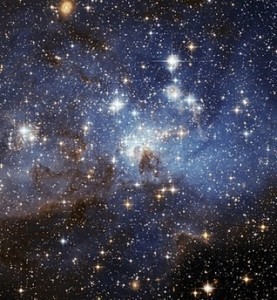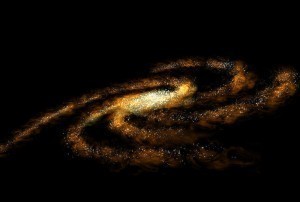How Small is the Smallest Star?
The smallest star known so far is OGLE-TR-122b. The solar radius is 0.12.  That’s about 167,000 km. That means the star is only 20% bigger than Jupiter. Jupiter meanwhile, is about 800 times the size of earth. However the mass of OGLE-TR-122b is 100 times that of Jupiter.
That’s about 167,000 km. That means the star is only 20% bigger than Jupiter. Jupiter meanwhile, is about 800 times the size of earth. However the mass of OGLE-TR-122b is 100 times that of Jupiter.
Specifications
The star is in the constellation Carina. The epoch is J2000.0 and the equinox is J2000.0. Its right ascension is 11h 06m 51.99s. The declination is -60 degrees, 51’, 45.7”. The spectral type is (primary) /M (b).
The apparent magnitude is 15.61 (infrared, 1 band). As a variable type it is classified as an eclipsing binary orbit. The period is 7.269 days. The inclination is 88–90 degrees. The smallest star’s eccentricity is 0.205. The temperature is 5,700 K (primary) and the mass is 1.0 (primary) / 0.09 (b).
General Characteristics
The OGLE-TR-122b derived its name from the Optical Gravitational Lensing Experiment, which detected the star. This star was seen as it eclipsed the bigger primary. The orbital period has been estimated at 7.3 days.
The primary of the system is still unknown. But some astronomers believe it is similar to the Sun. Its density has been estimated to be 50 times greater than the Sun. The OGLE-TR-122b is a red dwarf, the designation for the smallest stars.
What is a Red Dwarf?
All stars with a mass 50 percent of the Sun fall under this category. Some red dwarfs only have 7.5% the mass of the Sun. but no matter how small a red dwarf is, it is still possible for nuclear fusion to occur. This is due to the pressures taking place inside it.
Proxima Centauri
Proxima Centauri is the closest star to planet Earth. It is just 4.2 light years away. It is also a red dwarf. It has 12% of the mass of the Sun. its size is believed to be 14.5% that of the Sun.
One of the smallest stars out there, Proxima Cetnauri’s diameter is only 200,000 km. Compare that with Jupiter which is 143,000 km. Of course it is still larger than OGLE-TR-122.
Proxima Centauri and stars of similar dimensions conduct their functions more slowly than bigger stars. These stars can produce energy as little as 1/10,00th that of the Sun. This means red dwarfs have only 10% of the brightness of the Sun.
it also means they consume hydrogen more slowly. This means red dwarfs can live far longer than bigger stars. Unlike bigger stars, red dwarfs are able to mix up the hydrogen inside them.
What this means is red dwarfs will live much longer. The Sun will die in about 12 billion years. Red dwarfs, by contrast, will have enough hydrogen to last for 10 trillion years. Owing to their small size, these objects cannot be seen without using a telescope.
How Small Can Red Dwarfs Get?
The smallest possible size is 0.07 solar mass. A red dwarf cannot get any smaller than that because nuclear fusion will no longer be possible.
Although OGLE-TR-122b is the smallest star known, most scientists believe that even smaller ones exist, just waiting to be discovered.





